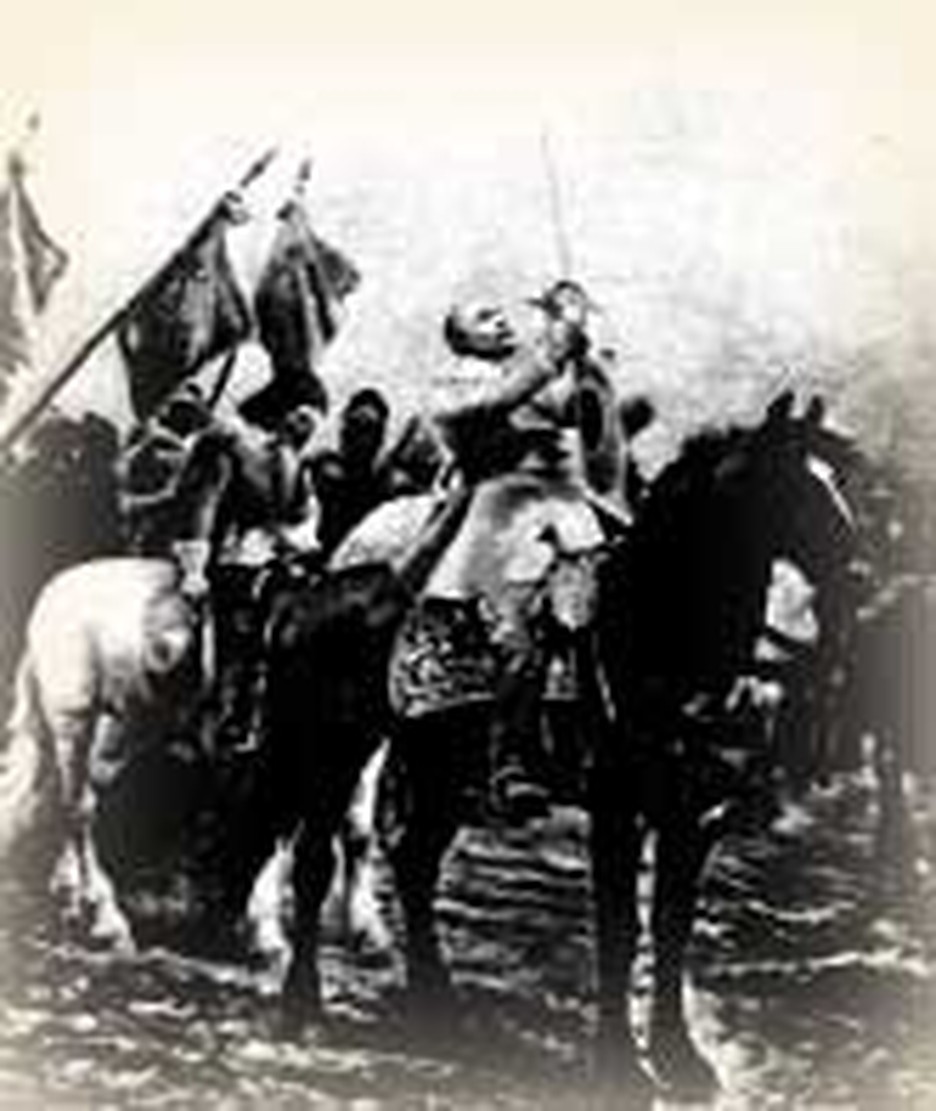
Catholics and Protestants fought he Battle of Lutzen--one of the most crucial in the Thirty Years War--on this day, November 16, 1632. The horror of the Thirty Years War in the seventeenth century was enough to make anyone shudder. Out of a German population of sixteen million people, only four million survived. Before the war, Augsburg had 80,000 people; only 18,000 were left in the city at the war's end.
The armies destroyed 30,000 villages. They hunted down peaceful peasants for sport. Farms lay in such waste that forests sprang up to completely cover them. Crime ran rampant.
The war started in Bohemia. Emperor Ferdinand II, a staunch Roman Catholic, strongly opposed all Protestants. He forbade them to hold meetings, abolished their civil privileges, tore down their churches and schools, and publicly hanged them in villages. The Protestants revolted in Prague and the revolt soon spread across the Austrian empire.
The Protestants were getting the worst of things when help came from King Gustavus Adolphus of Sweden. Curiously enough, Catholic France, playing a clever game under Richelieu, subsidized Adolphus and his Lutherans. Richelieu was trying to undermine the Hapsburg Empire.
But Gustavus, a devout Lutheran, believed God had called him to win religious and political liberty for Europe. As king, he had brought Sweden prosperity, new schools, hospitals, libraries, and just laws. He drew moral strength from his humility and love of God. Before going into battle, his disciplined forces sang hymns. In victory, he was the first to attempt to practice the humane treatment advocated by Hugo Grotius' theories of war and peace.
Gustavus landed on German soil in 1630, and at once went into battle with the Catholic Austrian army. He won a succession of victories in Pomerania, Saxony, the Rhine, and Bavaria which put him in control of much of Germany. Richelieu grew alarmed.
1632 did not develop as well for Gustavus as the previous year had. At last, in November, he thought he had a chance to make a surprise attack on Wallenstein at Lutzen. However, his movements were quickly detected by the Imperial army. As a result, Gustavus was drawn into battle with a larger, well-prepared foe who had reinforcements nearby. Charging bravely but recklessly ahead of his men, Gustavus was hidden from them in a swirl of fog.
On this day November 16, 1632, Gustavus was surrounded by enemy soldiers. They demanded his name. Gustavus is said to have replied, "I am the King of Sweden! And this day I seal with my blood the liberties and religion of the German nation." Already wounded by gun fire in arm and back, he was immediately run through with a dozen swords.
Thirsty for vengeance, Duke Bernard forced the faltering Swedish army to make several desperate charges. Against all odds, they swept the Imperial army before them, even though Catholic reinforcements had arrived. But the Protestant victory came at a terrible price. 15,000 of their men, and the flower of the Swedish army, died that day.
Bibliography:
- Adapted from an earlier Christian History Institute story.
- Fletcher, C. R. L. Gustavus Adolphus and the Thirty Years' War. New York: Capricorn, 1963.
- "Gustavus Adolphus and Sweden." http://www.historylearningsite.co.uk/ gustavus_adolphus.htm
- Ruoff, Henry W. Masters of Achievement. Buffalo, New York: Frontier Press, 1910. Source of the image.
Last updated July, 2007.








